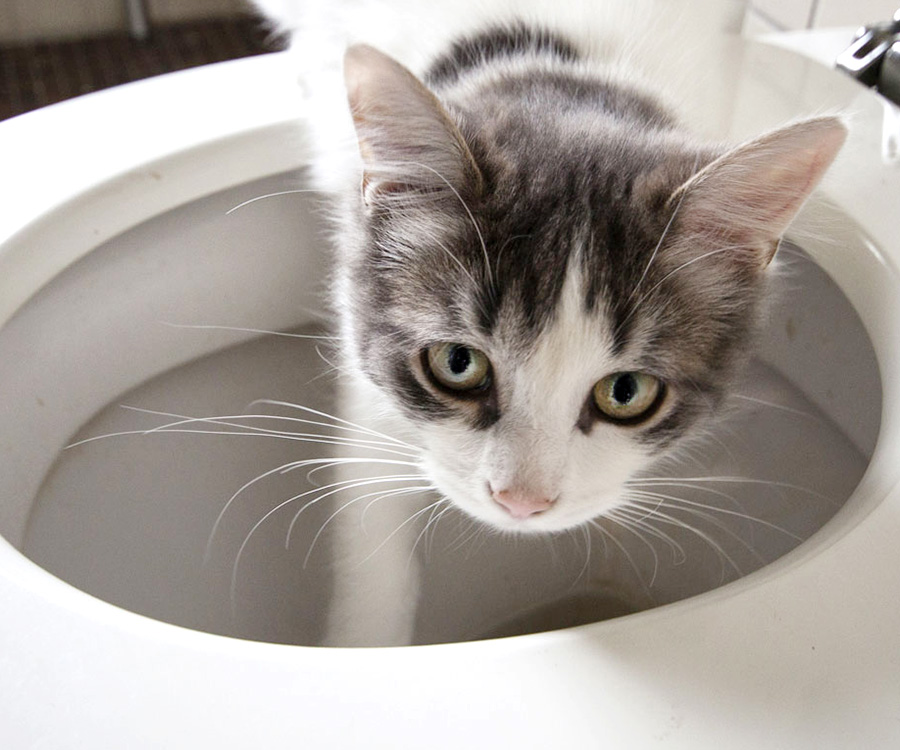Why Flushing Cat Poop Down Your Toilet May Cause Problems - Recommendations for Proper Disposal
Why Flushing Cat Poop Down Your Toilet May Cause Problems - Recommendations for Proper Disposal
Blog Article
The content in the next paragraphs pertaining to How to Dispose of Cat Poop and Litter Without Plastic Bags is amazingly intriguing. You should keep reading.

Intro
As cat owners, it's necessary to bear in mind how we get rid of our feline pals' waste. While it may appear practical to flush feline poop down the toilet, this technique can have harmful consequences for both the atmosphere and human health.
Alternatives to Flushing
Fortunately, there are more secure and a lot more accountable means to take care of cat poop. Consider the adhering to options:
1. Scoop and Dispose in Trash
One of the most common method of disposing of feline poop is to scoop it right into a biodegradable bag and toss it in the trash. Make sure to make use of a dedicated trash inside story and dispose of the waste promptly.
2. Usage Biodegradable Litter
Select naturally degradable cat litter made from products such as corn or wheat. These litters are environmentally friendly and can be safely dealt with in the trash.
3. Hide in the Yard
If you have a yard, take into consideration burying pet cat waste in an assigned area away from veggie gardens and water sources. Be sure to dig deep enough to avoid contamination of groundwater.
4. Set Up a Pet Waste Disposal System
Buy a family pet garbage disposal system particularly designed for feline waste. These systems use enzymes to break down the waste, reducing smell and environmental influence.
Wellness Risks
In addition to ecological worries, flushing cat waste can also position health and wellness threats to humans. Feline feces might consist of Toxoplasma gondii, a bloodsucker that can create toxoplasmosis-- a potentially extreme ailment, specifically for expecting ladies and people with damaged body immune systems.
Environmental Impact
Purging feline poop introduces damaging virus and parasites right into the water supply, presenting a significant danger to aquatic communities. These pollutants can negatively affect marine life and compromise water top quality.
Conclusion
Liable family pet possession extends past providing food and shelter-- it also entails correct waste monitoring. By avoiding purging cat poop down the toilet and choosing alternate disposal methods, we can lessen our environmental footprint and safeguard human health and wellness.
Why Can’t I Flush Cat Poop?
It Spreads a Parasite
Cats are frequently infected with a parasite called toxoplasma gondii. The parasite causes an infection called toxoplasmosis. It is usually harmless to cats. The parasite only uses cat poop as a host for its eggs. Otherwise, the cat’s immune system usually keeps the infection at low enough levels to maintain its own health. But it does not stop the develop of eggs. These eggs are tiny and surprisingly tough. They may survive for a year before they begin to grow. But that’s the problem.
Our wastewater system is not designed to deal with toxoplasmosis eggs. Instead, most eggs will flush from your toilet into sewers and wastewater management plants. After the sewage is treated for many other harmful things in it, it is typically released into local rivers, lakes, or oceans. Here, the toxoplasmosis eggs can find new hosts, including starfish, crabs, otters, and many other wildlife. For many, this is a significant risk to their health. Toxoplasmosis can also end up infecting water sources that are important for agriculture, which means our deer, pigs, and sheep can get infected too.
Is There Risk to Humans?
There can be a risk to human life from flushing cat poop down the toilet. If you do so, the parasites from your cat’s poop can end up in shellfish, game animals, or livestock. If this meat is then served raw or undercooked, the people who eat it can get sick.
In fact, according to the CDC, 40 million people in the United States are infected with toxoplasma gondii. They get it from exposure to infected seafood, or from some kind of cat poop contamination, like drinking from a stream that is contaminated or touching anything that has come into contact with cat poop. That includes just cleaning a cat litter box.
Most people who get infected with these parasites will not develop any symptoms. However, for pregnant women or for those with compromised immune systems, the parasite can cause severe health problems.
How to Handle Cat Poop
The best way to handle cat poop is actually to clean the box more often. The eggs that the parasite sheds will not become active until one to five days after the cat poops. That means that if you clean daily, you’re much less likely to come into direct contact with infectious eggs.
That said, always dispose of cat poop in the garbage and not down the toilet. Wash your hands before and after you clean the litter box, and bring the bag of poop right outside to your garbage bins.
https://trenchlesssolutionsusa.com/why-cant-i-flush-cat-poop/

As a passionate person who reads about How to Dispose of Cat Poop and Litter Without Plastic Bags, I thought sharing that information was a smart idea. Sharing is good. You never know, you may very well be doing someone a favor. I enjoy reading our article about Can You Flush Cat Poop Down The Toilet?.
Instant Quote Report this page